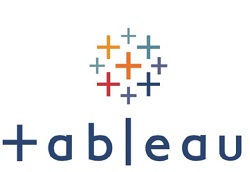Social Engineering and Security Risk Assessment: Understanding Psychological Vulnerabilities
Photo by Karolina Grabowska
In our interconnected world, we enjoy unprecedented convenience and information accessibility. However, this modern landscape also exposes us to novel risks. Cyberattacks have evolved, becoming more intricate. Hackers no longer solely target technological vulnerabilities; they capitalize on the weakest link in our security: human psychology.
In this article, we’ll shed light on social engineering and its intersection with security risk assessment.
A Closer Look at Social Engineering
Defining Social Engineering
Social engineering refers to the manipulation of individuals to divulge confidential information, perform actions, or make decisions that compromise security. This technique preys on human psychology, exploiting cognitive biases and emotional triggers to achieve malicious objectives.
The Art of Manipulation
Social engineers are akin to modern-day con artists, employing a range of tactics such as deception, persuasion, and impersonation. By assuming different personas and leveraging psychological insights, they orchestrate elaborate schemes that often go unnoticed until it's too late.
Psychological Vulnerabilities Explored
Understanding Human Behavior
Human behavior is complex and often irrational. It's this very complexity that social engineers exploit. Factors like trust, curiosity, and fear can lead individuals to lower their guard and unwittingly cooperate with attackers.
Factors Influencing Vulnerabilities
Various factors contribute to an individual's susceptibility to manipulation and exploitation by cyber attackers. By exploring these factors, we can shed light on the intricate interplay between human behavior and the security landscape.
-
Trust and Authority
-
Trust in Authority Figures: People tend to trust individuals who hold positions of authority or who appear to have credible affiliations.
-
Impersonation: Attackers may impersonate trusted entities, such as IT personnel or company executives, to gain access to sensitive information.
-
Cognitive Biases
-
Confirmation Bias: People often seek information that confirms their existing beliefs, making them more likely to fall for social engineering tactics that align with their preconceptions.
-
Urgency Bias: Creating a sense of urgency can lead individuals to make hasty decisions without properly verifying requests.
-
Curiosity and Sensationalism
-
Curiosity Gap Exploitation: Attackers craft messages or scenarios that evoke curiosity, enticing individuals to click on malicious links or divulge information to satisfy their inquisitiveness.
-
Sensationalism: Manipulative tactics that play on emotions, such as fear or excitement, can cloud judgment and lead to risky behaviors.
-
Lack of Awareness
-
Unfamiliarity with Attack Methods: Individuals who are unaware of common social engineering tactics are more likely to fall victim to them.
-
Inadequate Training: Insufficient cybersecurity education and training leave individuals ill-equipped to identify and respond to manipulation attempts.
-
Social Norms and Peer Pressure
-
Desire for Acceptance: People may comply with requests that align with social norms or peer expectations to avoid standing out or facing criticism.
-
Conformity: Succumbing to group norms, resulting in decisions that defy an individual’s own logical thinking.
-
Fear and Intimidation
-
Exploiting Fear: Attackers may use threats or intimidation to create fear, compelling individuals to act hastily without considering potential risks.
-
Little to No Trust in Security Protocols: When individuals cast doubt on the effectiveness of current security measures, they become more susceptible to following instructions from malicious actors.
-
Reluctance to Disobey
-
Authority Obedience: When individuals are unsure about security, they tend to follow instructions from malicious actors.
-
Avoiding Conflict: Some individuals may comply with requests to avoid confrontation or negative consequences.
The Role of Security Risk Assessment
Identifying Potential Threats
Effective security risk assessment involves identifying potential vulnerabilities within an organization's systems and processes. This assessment extends beyond technology, encompassing human factors that could be exploited through social engineering.
Mitigation Strategies
As the threat landscape continues to evolve, organizations must proactively address the vulnerabilities that social engineering exploits.
Implementing effective mitigation strategies can significantly reduce the risk of falling victim to manipulation and deception. The following are some key strategies:
-
Employee Training and Awareness
Educating employees about common social engineering tactics and raising awareness about the potential risks is a fundamental step. Regular training sessions can help individuals recognize suspicious activities, such as phishing emails or unsolicited requests for sensitive information.
-
Multi-Factor Authentication (MFA)
MFA adds an extra layer of security by requiring users to submit multiple forms of identification before providing access. This can thwart attackers who attempt to exploit stolen credentials.
-
Robust Verification Processes
Implementing stringent verification processes for sensitive actions, such as changing account details or processing financial transactions, can help prevent unauthorized access.
-
Periodic Security Audits
Regular security audits help identify potential vulnerabilities and gaps in existing defenses. Addressing these issues promptly enhances an organization's overall security posture.
-
Continuous Monitoring and Threat Intelligence
Employing advanced threat intelligence tools and continuous monitoring for emerging social engineering tactics allows organizations to adapt their defenses to evolving threats.
Psychological Countermeasures
Building Resilience against Manipulation
There’s no stronger weapon in the fight against social engineering than education. By raising awareness about common tactics and psychological vulnerabilities, individuals can become more resistant to manipulation attempts.
Training and Education
Organizations can empower their employees through comprehensive training programs. Simulated phishing exercises, workshops on recognizing manipulation techniques, and ongoing education can significantly enhance an individual's ability to discern and respond to potential threats.
Integrating Security Risk Assessment
Incorporating Human Factors
A holistic security approach acknowledges the human element. By integrating security risk assessment with insights from psychology and behavioral science, organizations can develop more robust defense strategies.
Fostering a Security-Conscious Culture
Cultivating a culture of security awareness is paramount. When individuals at all levels of an organization prioritize cybersecurity and understand their role in safeguarding sensitive information, the risk of successful social engineering attacks diminishes.
Safeguarding the Human Firewall
In an era of relentless digital innovation, understanding the intricate interplay between human psychology and cybersecurity is imperative. Social engineering exploits the very essence of human behavior, making security risk assessment a vital component of any comprehensive cybersecurity strategy.
 clark
28th May 2025
clark
28th May 2025
BMW equips the 540i with advanced tech and safety features to keep drivers connected and protected:
 Wheel
20th April 2025
Wheel
20th April 2025
Wheel4x4 is a name that resonates with off-road enthusiasts who crave rugged performance, top-tier 4x4 gear, and unstoppable adventure.
 Light
15th April 2025
Light
15th April 2025
Social engineering preys on our trust, turning our own psychology into a security risk. A thorough assessment helps identify vulnerabilities within an organization. Think of it like playing Uno Online; you need to anticipate your opponent's moves. Recognizing these manipulation tactics is the first step in protecting yourself and your company from potential attacks. Training employees is crucial to building a human firewall.
 Ahli
2nd April 2025
Ahli
2nd April 2025
juraganbet88 link merupakan salah satu platform terpercaya untuk mencari cuan dengan permainan slot online nya yang gacor dan banjir turun scatter
 Ahli
2nd April 2025
Ahli
2nd April 2025
betwin4d login merupakan situs dengan permain slot dan togel toto yang minimal deposit untuk bermain hanya 10.000 saja cocok untuk para player receh mencari kemenangan maxwin
 aliumair
12th March 2025
aliumair
12th March 2025
We are really grateful for your blog post. You will find a lot of approaches after visiting your post. I was exactly searching for. Thanks for such post and please keep it up. Great work.전당포 대출 사이트
 Ahli
22nd February 2025
Ahli
22nd February 2025
JURAGANBET88 adalah situs dengan rtp online yang tinggi sudah dijamin maxwin dan pelayanan 24 jam non-stop
 Ahli
22nd February 2025
Ahli
22nd February 2025
JURAGANBET88 merupakan salah satu sarana untuk bermain slot online yang gacor denagn minimal deposit 5000 yang bisa di mainkan setiap hari
 Ahli
22nd February 2025
Ahli
22nd February 2025
Betwin4d adalah situs permainan slot online yang paling terpercaya dan aman buat di mainkan setiap hari
 Angeline
21st February 2025
Angeline
21st February 2025
Betwin4d memiliki banyak sekali game slot gacor yang terbaik hari ini.
 Angeline
21st February 2025
Angeline
21st February 2025
<a href="https://gudangperkasa.com/">Betwin4d</a> is a great game to play today.
 Mark
14th February 2025
Mark
14th February 2025
We've facing the social engineering before, and the result is terriable.
 Mark
14th February 2025
Mark
14th February 2025
Security is always a big problem for company, especially threads of social engineering.
 aliumair
13th February 2025
aliumair
13th February 2025
Balaksix Slot88 adalah situs resmi slot gacor hari ini yang dilengkapi dengan link gacor slot starlight princess 1000 gampang menang jp maxwin. Salam JP Slot88slot gacor hari ini
 aliumair
13th February 2025
aliumair
13th February 2025
This is such a great resource that you are providing and you give it away for free. I love seeing blog that understand the value of providing a quality resource for free.hk lotto
Please rotate your device
We don't support landscape mode on your device. Please rotate to portrait mode for the best view of our site





